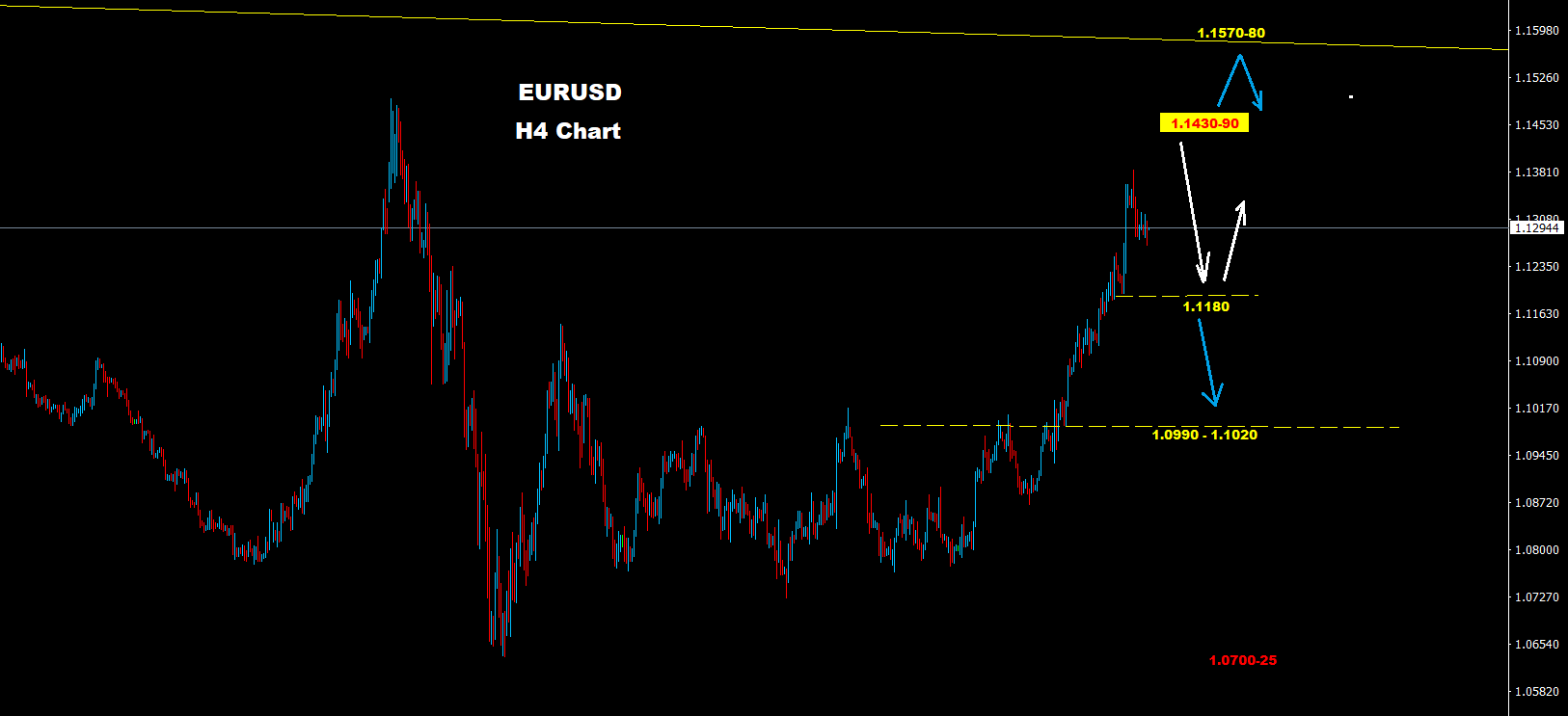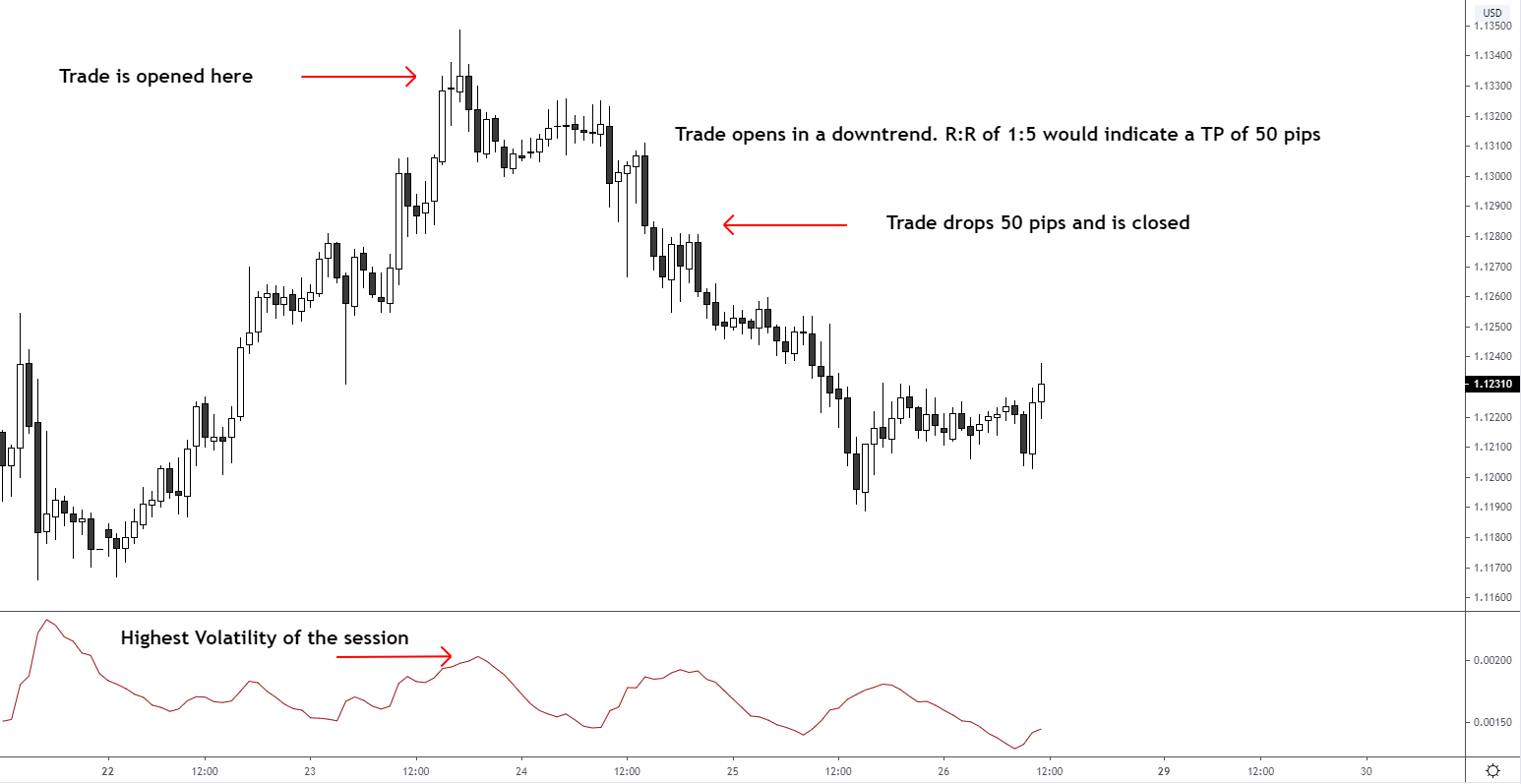By Orbex
There are plenty of ways to use the ATR indicator on the MT4 trading platform. However, today we will be highlighting the main points that can be the most advantageous for beginner FX traders.
The ATR is commonly used to assist day traders to identify signals, prior to entering a trade. You could also use it to determine the placement of a stop loss or take profit order.
Before we dive into how to do that, however, let’s have a quick look at a few main features.
What is the Average True Range?
The ATR indicator was developed by J. Welles Wilder, the architect behind several technical indicators such as the Relative Strength Index (RSI), the Average Directional Index, and the Parabolic SAR.
The Average True Indicator (ATR) measures volatility and shows how much an asset has moved during a given time span (in pip terms).
Free Reports:
 Get Our Free Metatrader 4 Indicators - Put Our Free MetaTrader 4 Custom Indicators on your charts when you join our Weekly Newsletter
Get Our Free Metatrader 4 Indicators - Put Our Free MetaTrader 4 Custom Indicators on your charts when you join our Weekly Newsletter
 Get our Weekly Commitment of Traders Reports - See where the biggest traders (Hedge Funds and Commercial Hedgers) are positioned in the futures markets on a weekly basis.
Get our Weekly Commitment of Traders Reports - See where the biggest traders (Hedge Funds and Commercial Hedgers) are positioned in the futures markets on a weekly basis.
As we know, volatility can be a driving force when trading an asset. Therefore, the assistance of the ATR can provide realistic possibilities with achieving trading targets.
Setting Up Your ATR
Wilder suggested that 14 periods are ideal, but this may vary depending on your own Forex trading strategy.
Swing FX traders would benefit using the ATR 7 period on a daily chart, as this identifies the range for the past week. Whereas, for example, intraday traders would be more inclined to use 14 periods on a 1-hour chart.
How to Trade with the ATR
The ATR can help identify breakouts as well as trend reversals since usually, most FX traders are waiting for breakouts to place trades.
If the ATR falls to a low reading, then a breakout or reversal can occur. Next, the ATR range can be identified for a particular asset, and a trade can be most likely placed.
As per the chart below, once a false break forms, then a breakout is successful.
Now, when the downtrend or uptrend has been detected, stop loss and/or take profit targets can be identified. This will determine when, based on your risk-reward scenario, should the trade close to your satisfaction. And that can be either with a win or a loss.
For example, the chart below shows the ATR range is at 10 pips at the time the market starts to move downwards. Based on a simple 1:5 risk-reward scenario, the take profit of a sell trade would be placed 50 pips away from the entry price. The stop loss, on the other hand, would be placed 10 pips away. Both based on the ATR reading.
ATR Recommendations
Since how far markets move depends mainly on volatility, you could use the ATR to set reasonable targets when placing a trade.
As an example, think of a 1:3 risk-reward scenario. If the ATR reads an intraday range of 20 pips on the EURUSD and the market has completed a 60-pip range, this would indicate that the trade should be closed.
However, and as per the ATR, the price does not usually continue expanding beyond the average range (20 pips in this case). Therefore, when setting a 1:3 ratio, ensure that the markets provide that range. Otherwise, it might be riskier to keep that reward at 60 pips as the ATR only indicates a sensible 20 pips.
What the ATR is NOT
When using the ATR in trading practice, do note that it is not a directional indicator and measures only volatility.
The ATR is a subjective measure. Therefore, you wouldn’t usually use it as a standalone indicator to give insights into whether the trend is about to reverse or not.
Still, the ATR is a great tool when it comes to adapting to the ever-changing market environment.
By Orbex

